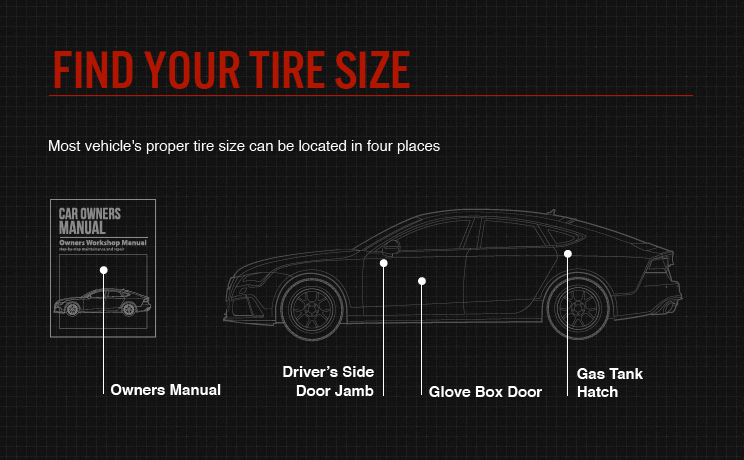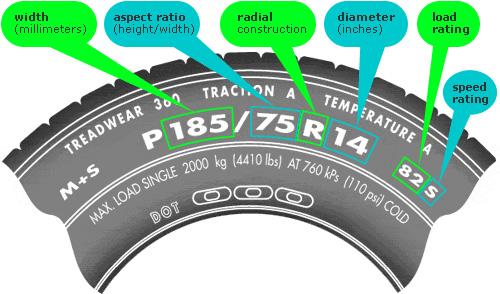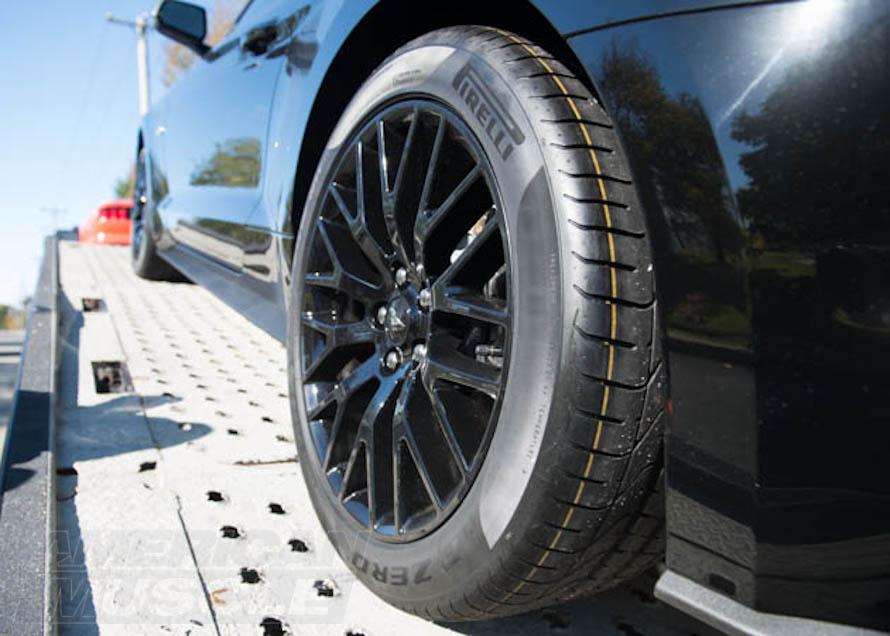Buying the tires for your car is easy, but finding the right ones at the right size can be difficult. Get it wrong, and your car’s performance will deteriorate significantly. You can find tire size for your vehicle in the owner’s manual.
Normally, each corresponding car model uses a specific type of tire, suitable for performance. Through the information displayed on the tire, drivers can easily read important parameters without wasting much time.
Another way to find the tire size is to look into the tire label inside the fuel hatch, glove box lid, or the driver’s doorjamb. Knowing the right size will help you to make an informed purchase.
Contents
How to Find Tire Size for Your Car
Observing the letters and parameters on car tires helps car owners accurately understand all important information. These parameters can consist of only letters, or a combination of letters and numbers, in large font size, usually located on the outer.
As we mentioned above, you can find loads of information about a tire by just reading the letters and digits encoded on its sidewall. For example, the label on the sidewall may have a code like “P215/60R16 94T”. It carries information about a tire’s size, speed rating, treadwear, and other aspects. Let’s check the tire size guide to learn how to decipher the sidewall information:

Find tire size
It’s easy as the first part of the code indicates tire sizes for cars. The “215” indicates the width of the cross-section in millimeters while the number “60” refers to the sidewall’s height and width ratio, which means the height is equal to 60% of the width.
The tire type
Another important aspect is to know the type as it defines the proper use of a tire. The first letter denotes that information. In this case, “P” implies that it’s a passenger car tire while it would be a light truck tire if the letters were “LT.” Other symbols are:
- ST: special trailer tire.
- T: temporary replacement tire (Temporary).
- C: tire for commercial vehicles and heavy trucks.
Construction
The label also carries information about the construction of the tire. The letter “R” after the number 60 means radial-ply construction. It means radial layers across the tire. On the contrary, if it were a “B,” it would indicate a bias structure, meaning diagonal layers.

Tire sizes for rims
The first part’s last two digits refer to the width of the rim diameter in inches. Here, the digits are “16”, so the wheel diameter, in this case, is 16 inches. While replacing a tire, you always have to choose one with the same rim size.
Load index and speed rating
The load index indicates the loading capacity of the tire. The larger the value, the higher the tire’s load level. Drivers should note, absolutely do not replace the original tire with a tire with a maximum allowable load index lower than this parameter, only use tires with the same or higher rating. This will ensure the tires can withstand the vehicle’s maximum load when operating.
The last part of the label carries information about load index and speed rating. The digit “94” implies the maximum tire load and the letter “T” indicates the speed rating, which means the speed limit when carrying the maximum load.
An all-season tire can be rated T (118 mph) or S (112 mph). There are other ratings too – Y (186 mph), W (168 mph), ZR (149+ mph), V (149 mph), and H (130 mph). There are winter tires that start with the rating Q (99 mph) and then go upwards.
The sidewall also has two more labels carrying information about treadwear grade, traction & temperature scores, and manufacturing year. So, you’ll find tire size as well as other valuable data from those labels. Remember to keep at least the size and speed rating the same as the original tires while replacing the old ones.
How to choose the best tire size for your car:
Tire pressure
Car tire pressure parameters are located on the inside edge of the tire, indicating the appropriate pressure to maximize the tire’s performance.
Thus, by simply observing and understanding the correct car tire parameters, drivers can clearly understand most information related to tires, making the process of choosing tires when changing tires easier and faster.



